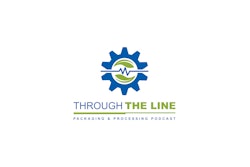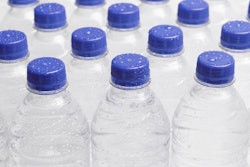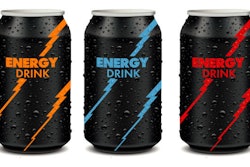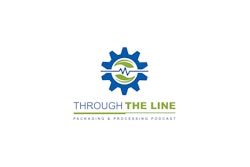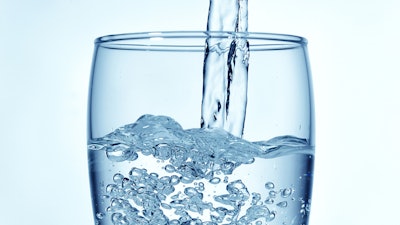
As a water technology quality manager for Coca-Cola, Laurie Gilmore is often asked whether it’s really necessary to treat the incoming water that’s being used for its beverages. Shouldn’t the water coming from a municipality be good enough already?
“As a beverage company, this is your primary ingredient,” Gilmore says. “How many of you at home believe that your city water is consistent from day to day, week to week, season to season? How many times do any of you get boil water notices because there was a line break? I know in the city of Atlanta, we get them all the time.”
Various locations and water sources have particular water issues, but regardless, consistency is key. “It’s just not always as consistent as you would like for it to be to make a consistent ingredient, water, for your products,” Gilmore says, also referencing the possibility of contaminants we don’t yet know about. “If they are there in your municipal water, it’s still going to be three to five years before the municipality is going to be able to address that for you.”
In an hour-long presentation, Gilmore covered the essentials of water treatment considerations at a full-day Water Symposium that took place following this year’s BevTech, an annual conference of the International Society of Beverage Technologists (ISBT).
 Laurie Gilmore, water technology quality manager at Coca-Cola, presents Water Treatment 101 at BevTech.Aaron Hand
Laurie Gilmore, water technology quality manager at Coca-Cola, presents Water Treatment 101 at BevTech.Aaron Hand
Although production facilities typically have robust processes in place to ensure safety, there are still aspect of water that you can get wrong. “It will react with some of the other ingredients in your product and you’re going to get an off taste, you’re going to get quality complaints,” Gilmore says. “And that’s equally as big a risk to you and your brands as is the food safety.”
Common water quality challenges
The challenges you might face in your water quality depend in part on what you’re producing with that water. Water hardness, for example, is more likely to impact your process if you’re heating the water because it will reduce the efficiency of that equipment. Alkalinity will impact the formula in your carbonated drinks.
 | Beverage Technologists Embrace the Merits of Artificial Intelligence |
Total organic carbon (TOC) is not a quality issue that people are typically concerned about because it’s usually low in municipal waters. But it will impact the performance and life of the granular activated carbon (GAC) that you’re using, Gilmore warns. It can build up more microbiological growth on the GAC over time, causing increased maintenance or replacements.
There are some formulas or particular ingredients that are highly sensitive to chlorine and chloramine, which will create an off taste. Worse, you won’t detect it right away. “If I am getting anything even close to the detection limit on some of the analytical analyzers that are out there, and it hits some of those products too much, it’s not going to happen immediately,” Gilmore says. “That’s the problem. It doesn’t happen for the sensory group that’s in the plant checking it before it leaves the door. It’s going to happen three weeks later.”
Some facilities would rather get rid of their GAC processes used for water treatment because the technique uses too much water and is maintenance-intensive, Gilmore notes. “If you get some algae, those notes are hard to remove with anything but a good GAC process,” she says, adding that there are risks that GAC mitigates that a remote osmosis (RO) system just won’t touch.
Choosing your water treatment
Once you understand more about your water quality risks, you can then determine the best methods for treating the water.
The beverage industry tends to rely on a multiple-barrier treatment system—using a series of complementary processes, each focused on the removal of one or more specific parameters of concern. “No one process can do everything,” Gilmore says. Using more than one process also provides redundancy for microbial treatment in case one treatment should fail.
Most facilities will have some kind of physical-chemical separation process, whether chemical treatment or some type of filtration. There is a wide range of possible filtration processes that can be used, all with their pros and cons. Nanofiltration, for example, removes hardness and alkalinity, but does not remove 100% of salts and minerals. RO, on the other hand, allows very little mineral or salt passage, but might not effectively reject hydrophobic organics.
Gilmore detailed various ion exchange processes used to reduce alkalinity, hardness, and target compounds. “It can be very good for targeting select compounds that are a problem,” she says. “They’ve gotten to where they can design some of these resins to hone in on different things very specifically that are very good.”
The caution, however, is that ion exchange systems require regeneration. “So either you’re going to be dealing with some aggressive chemicals or you’re going to be dealing with some brine solutions, and you have to be prepared to manage and use those chemicals safely and efficiently,” she says. “And if you don’t do it right, you will damage the resin and it will turn to jello.”
Chlorination, UV light, and ozone are all good disinfection methods. “We use disinfection processes for the microbiology that’s coming in because we don’t want adverse microbiology in our product,” Gilmore says. “You may use one, you may use two, you may use all three of these in your plant.”
What’s important is to understand why you’re using each method and what organism you’re trying to mitigate, and also know what contact time and dose will be effective.
It’s also important to protect stored water from microbiological recontamination, Gilmore points out. “I can have the best water treatment system in the entire world, and if I put it into a pipe and I don’t ever clean that pipe, and I do nothing with it except once every two years and I get a biofilm in that pipe, I spent a lot of money cleaning up that water up front to have micro problems downstream.”
Maintaining operational performance
Once you know what (type of water you have) and how (you’re going to treat it, you have a better of idea of what you need to confirm and how often. A monitoring and control plan should be developed based on the risks being mitigated and the processes being used. Monitoring to ensure operational performance is as important as the selection of the process itself, Gilmore says.
Each process has a purpose, so it’s important to have a routine to ensure each process is effective. How often you monitor those processes, however, will depend on the variability of the process. Highly variable water requires more frequent monitoring and might even need online real-time monitoring for process control consistency. Monitor both the inlet and the outlet of the process to demonstrate process performance.



